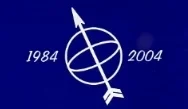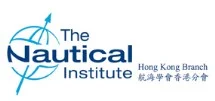Mar91
archive > Log > Log1991
Hong Kong

Visit to Royal Observatory

WE WERE WELCOMED to the Royal Observatory by Mr Y. K. Chan, senior scientific officer, who was to be our guide for this visit. Our first stop was in the central forecasting office where we saw much sophisticated equipment including the plotting machines producing the various weather maps and charts. The. meteorological information on these charts was still being drawn manually until 1988, but even today the isobaric charts are still plotted manually to help forecasters' understanding of the current situation. Data readings are plentiful and accurate to the NW but scarce to the SE which makes forecasting for weather systems from this direction more difficult, hence the reason ships' weather reports are so important.
Various monitoring devices were also seen, such as satellite receivers for weather photographs, and a video picture from Waglan to supplement the automatic low visibility sensor sited there. We were told this was necessary because of the limitations of the automatic device which can be affected by low cloud and localised directional phenomena. There are plans to install more automatic visibility sensors around Hong Kong, including one on Cheung Chau.
Numerical models running on computers are used to assist in weather forecasting. Three different models are used: one from UK, one from Tokyo and the third made by the RO, which is considered the most accurate for local conditions. In particular Mr Chan told us that the Hong Kong RO was considered to be amongst the most accurate forecasters of tropical revolving storms.
The accuracy of forecasts is checked after the event and the result is usually in the order of 75 per cent accurate. If the result is less than 70 per cent then the forecaster responsible has to write a report to explain what went wrong!
The main winter weather influence is from the north, but in the summer it is from the south and this is when the Pearl River Estuary has some effect on the weather in Hong Kong. The observatory has a weather radar sited on Tates Cairn with a maximum range of 512 km; its main purpose is the detection of rain echoes. One other important function carried out by the RO is the monitoring of background radiation levels in the territory, in preparation for the start-up of the Daya Bay nuclear power station just across the border.
Contributed by P. R. Owen, FNI
Seaways March 1991

